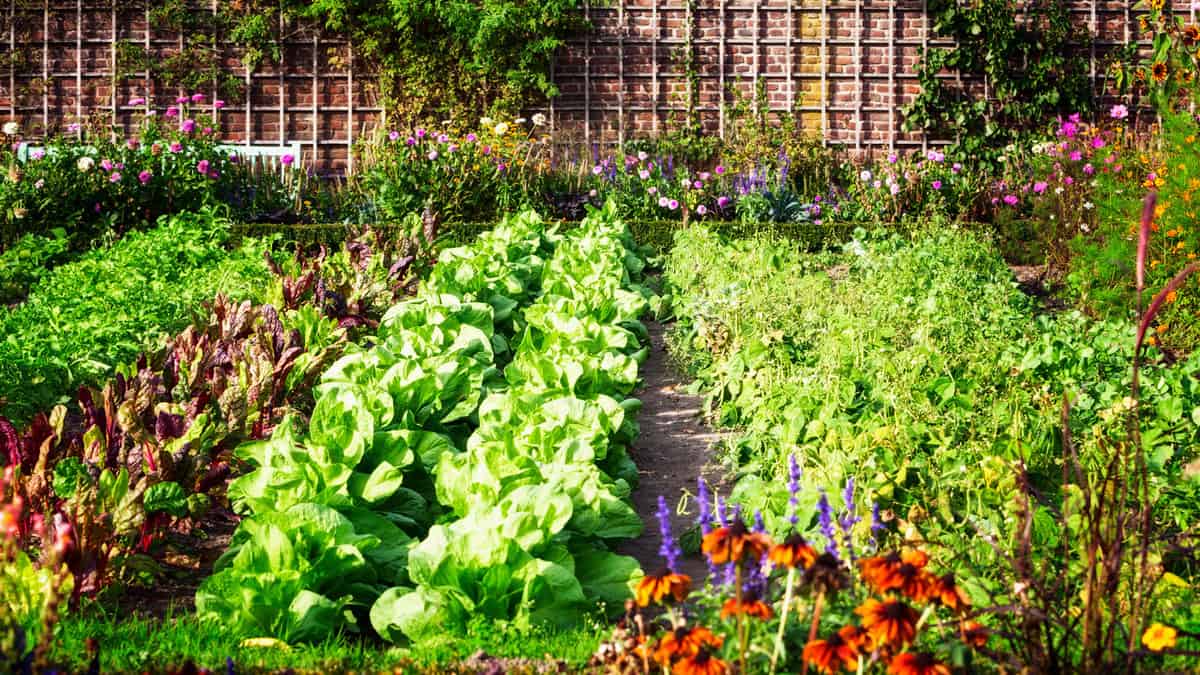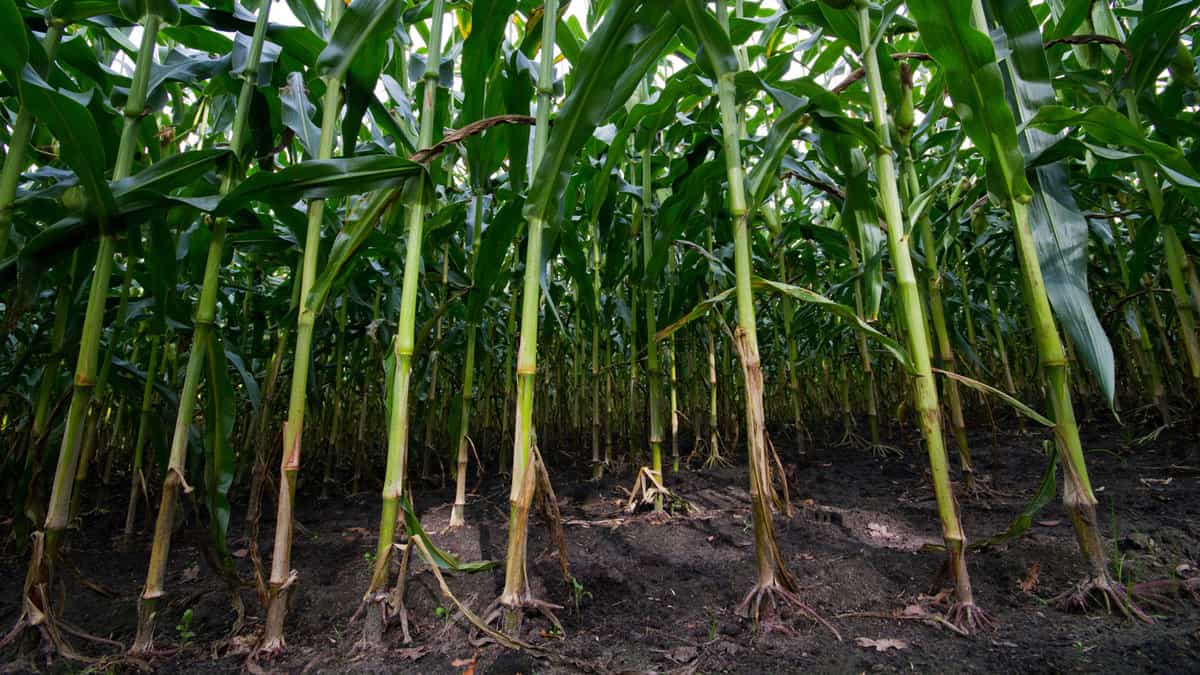One crucial aspect of gardening is knowing how to measure plant spacing.
Proper plant spacing encourages healthy growth, helps prevent diseases, and even controls weeds.
To help you enhance your gardening skills, this article will cover the importance of measuring plant spacing.
Knowing how to measure plant spacing can make a world of difference in the growth success of your plants.

Why Measuring Plant Spacing is Essential
Measuring plant spacing is essential in successful gardening, as it ensures that each plant has enough room to grow and get the nutrients it needs.
When plants are too close together, they can compete for water, sunlight, and soil nutrients. This competition can lead to weaker, less productive plants.
By accurately measuring plant spacing, you can maximize the potential of your garden.

Understanding Plant Spacing
To determine the appropriate spacing for your plants, it's essential to consider their mature size.
Keep in mind that different plant types will have different spacing requirements.
For instance, carrot and parsnip are slower to emerge and need more spacing than other vegetables.
You can usually find specific plant spacing recommendations on seed packets or through reputable gardening resources.
Here are some general guidelines for vegetable plant spacing:
- Large vegetables (e.g., tomatoes, peppers, eggplants): 18-24 inches apart
- Medium-size vegetables (e.g., kale, lettuce, swiss chard): 8-12 inches apart
- Small vegetables (e.g., carrots, radishes, onions): 1-4 inches apart
When measuring plant spacing, you'll want to focus on the distance between the centers of each plant and draw a plan. This is often referred to as "on-center" spacing.
For example, a 2-foot on-center (2' o.c.) spacing means that the plants will be planted 2 feet apart from the center of one plant to the center of the next plant.
Square Foot Gardening
A useful technique for maximizing space in your garden is the Square Foot Gardening method.
In this approach, the garden is divided into square-foot sections, and a different crop is planted in each square, using 1, 4, 9, or 16 plants per square foot depending on the plant size.
This method is particularly efficient for small gardening spaces.

Practical Steps for Measuring Plant Spacing
In this section, we'll guide you through practical steps to measure plant spacing accurately.
Choosing the Right Tools
Making accurate measurements is essential for successful gardening, so invest in the right tools.
Here is a list of useful tools for measuring plant spacing:
- Measuring tape: a reliable and simple tool for measuring distances between plants and rows.
- Yardstick: another option for measuring short distances accurately.
- Ruler: useful for measuring smaller plant spacings and distances between seeds.
- String and pegs: helpful when creating straight rows or marking out areas for planting.
Pick the tools that best suit your needs and make sure they are always handy when planning and planting your garden.
Spacing Different Types of Plants
Each plant species has specific spacing requirements for optimal growth. Here's a brief guideline for spacing some common plants:
- Root vegetables (carrots, radishes): 2-4 inches apart.
- Leafy greens (lettuce, spinach): 6-12 inches apart.
- Tomatoes: 1 plant per square foot.
- Peppers: 12-24 inches apart.
- Squash: 2 square feet per plant.
- Cucumbers: 12-18 inches apart.
- Pole beans: 8 plants per square foot, on a trellis.
Please note that these are guidelines only. Always consult seed packets or gardening resources for specific spacing recommendations for the plants you want to grow.

Common Mistakes and How to Avoid Them
Here are some common mistakes made when measuring plant spacing and how to avoid them:
1. Not Accounting for Mature Size
Remember to consider the fully grown size of your plants when spacing, as overcrowding can lead to poor airflow and increased disease risk.
2. Skimping on Space for Pathways
Ensure you leave enough space between rows for comfortable walking and maintenance.
3. Ignoring the Plant's Needs
Be aware of each plant's preferred growing conditions (sun, shade, soil type) when planning spacing.
4. Relying on Memory
Always refer back to your garden plan or plant tags when planting and measuring, instead of relying on memory.
Moving Beyond Basic Plant Spacing: Advanced Tips
When you're ready to take your gardening skills to the next level, it's could be more beneficial to try more advanced plant spacing techniques to maximize your garden's productivity.
Firstly, try experimenting with intensive garden spacing in raised beds.
This technique eliminates the need for rows and paths, helping you make the most of your garden space, control weeds, and save on water.
To apply intensive spacing, focus on filling the entire bed and planting as closely as recommended for each plant type.

You can also consider incorporating companion planting into your garden space.
This age-old practice involves planting different plant species close together.
It can lead to natural benefits like pest control, pollination, and improved nutrient uptake.
As you become more familiar with companion planting, research which plant combinations work best and analyze the results in your garden.
Proper Spacing, More Productive Plants
Understanding how to measure plant spacing is crucial to your gardening success.
Proper spacing allows your plants to receive adequate sunlight, nutrients, and air circulation, which leads to healthier and more productive plants.
Remember to consult the specific spacing recommendations for the plants you're working with, as different species have unique requirements.
Planning your garden layout ahead of time can also help to ensure that you provide each plant with enough space to flourish.
So, go ahead and apply these spacing tips to your garden, and enjoy the rewards of your efforts.
For more gardening tips, check out these other helpful articles:
How To Start A Raised Bed Vegetable Garden For Beginners [Step By Step Guide]
New Study: Gardening Programs To Increase Children’s Ability To Delay Gratification?
